The Downy Woodpecker (Picoides pubescens) is the smaller of the two, measuring 6 3/4 inches (17 cm).
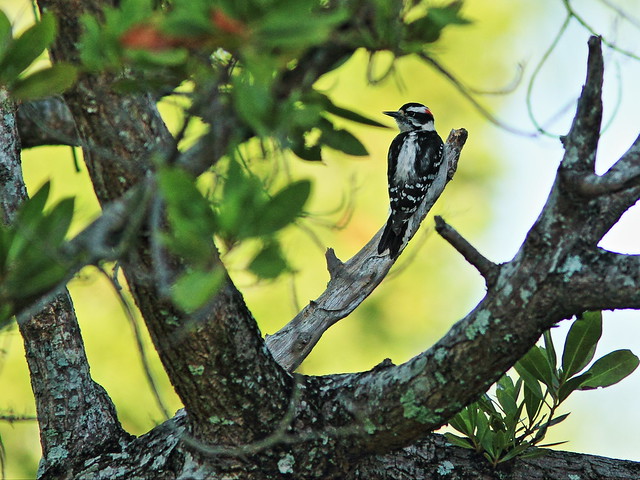
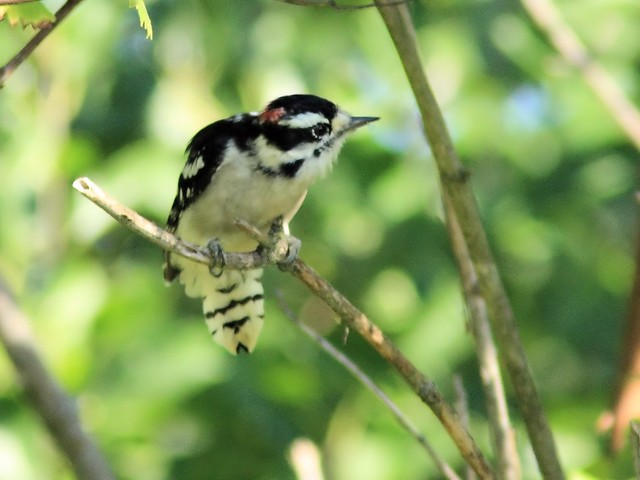
They are active little birds, often leaping from branch to branch as they forage by hammering into the bark.
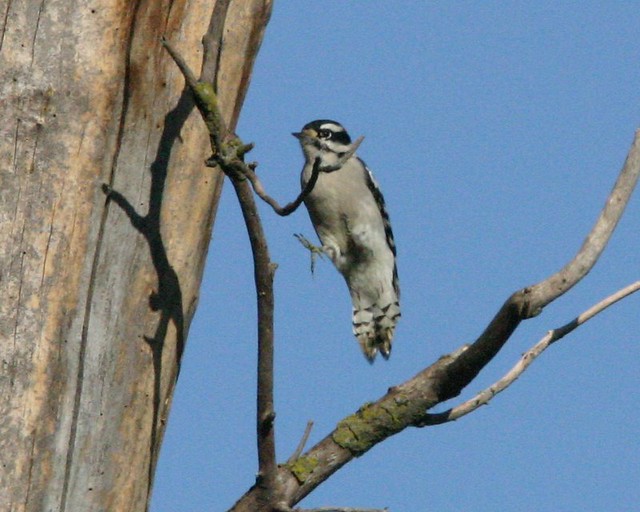
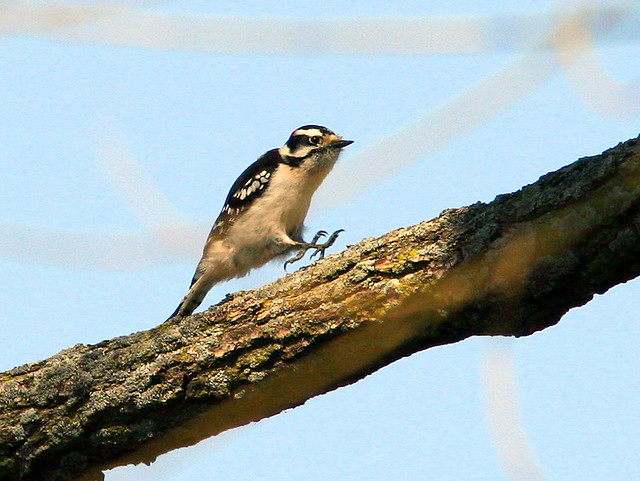
The female Downy Woodpecker lacks the red patch on her head.
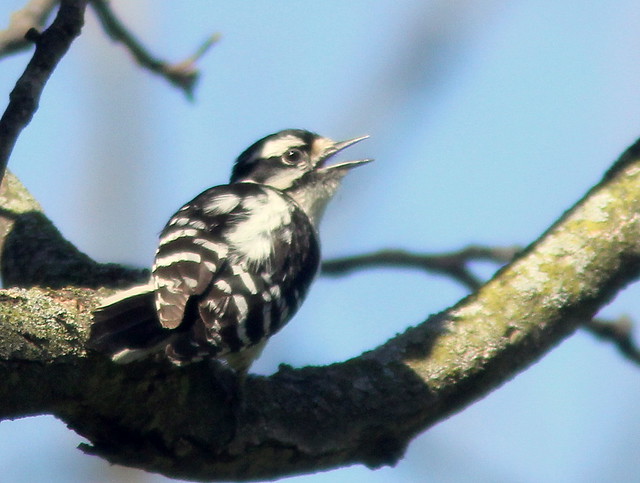
Downy Woodpeckers typically show a few black markings on their outer tail feathers. I have seen some in New Mexico, such as this one, with clear outer tail feathers.
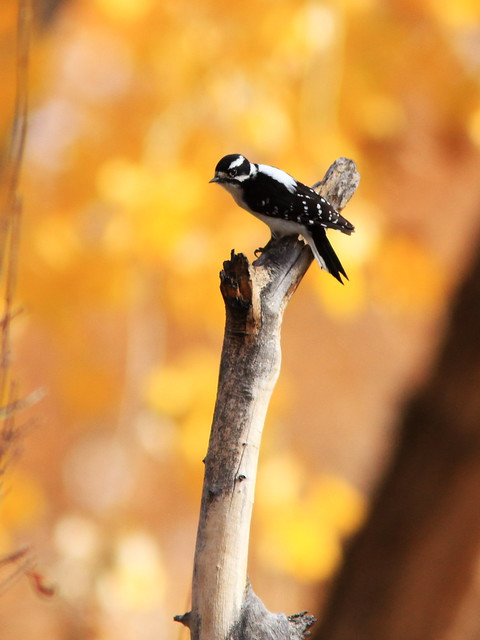
This melanistic female Downy Woodpecker appeared in one of my south Florida neighbor's yard, drumming on a dead branch of a tree. Its head was almost entirely black and its back was heavily barred. I could find no other such a specimen when I searched the Internet for photos. Her mate had typical standard plumage.
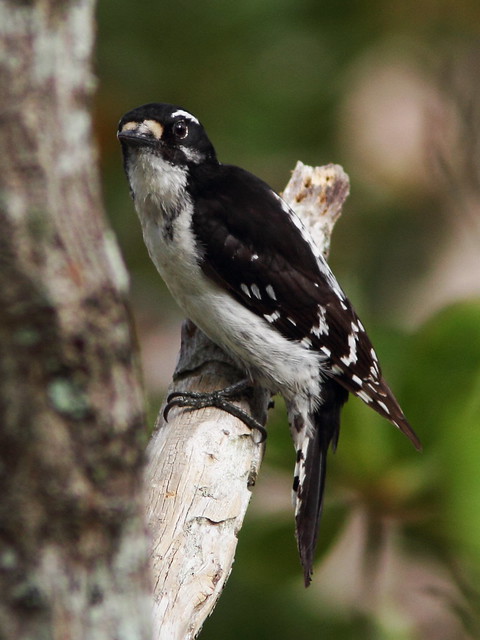
The bill of the larger Hairy Woodpecker (Picoides villosus) is about as long as its head. In fact, I often say that if you could drive its bill into his head it would stick out slightly in the back (not too appealing!).
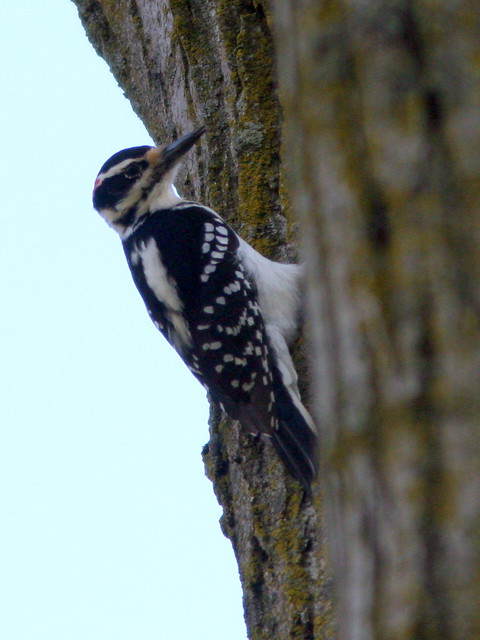
The Hairy Woodpecker measures 9 1/4 inches (24 cm).
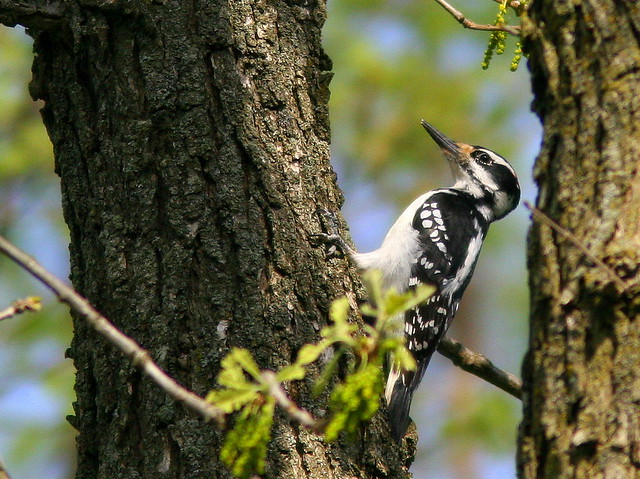
Hairy Woodpeckers nearly always have pure white outer tail feathers. I remember this by saying "The Hairy Hain't got no tail bars."
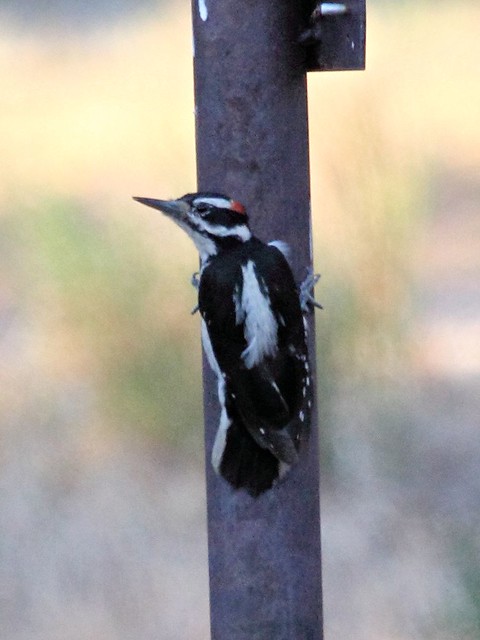
Hairy Woodpecker in flight:
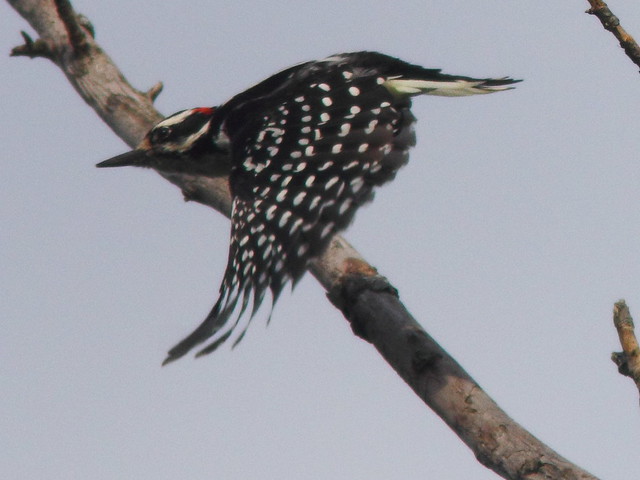
Pair of Hairy Woodpeckers. It is often said that they do not have the "cute" look of the smaller Downy.
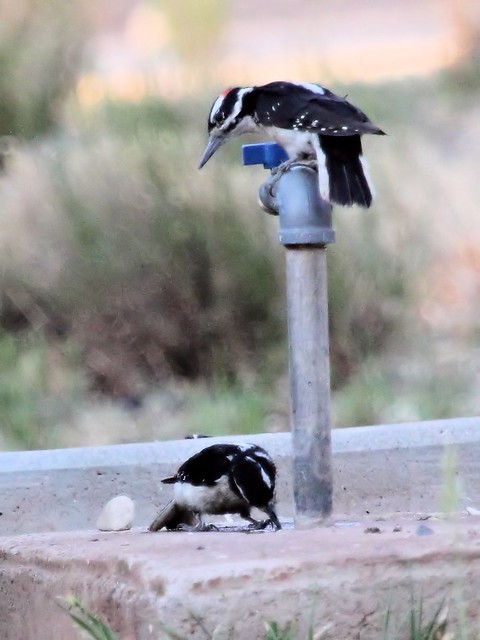
This is the related Ladder-backed Woodpecker (Picoides scalaris) of the arid southwest, photographed in New Mexico.
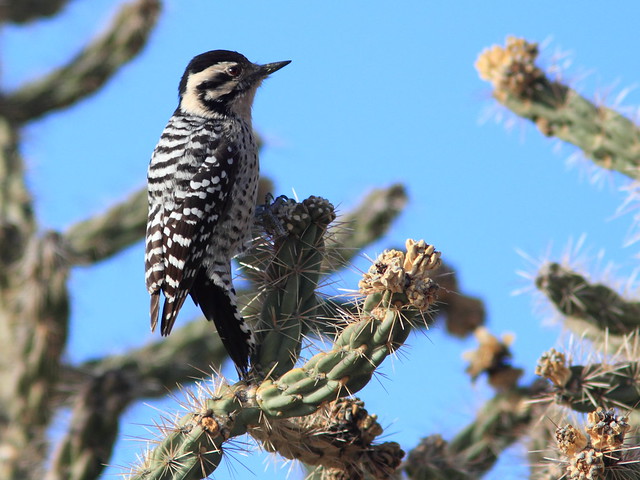
This is my only photo of a Nuttall's Woodpecker (Picoides nuttallii), a poor image of one in California, retained for documentation:
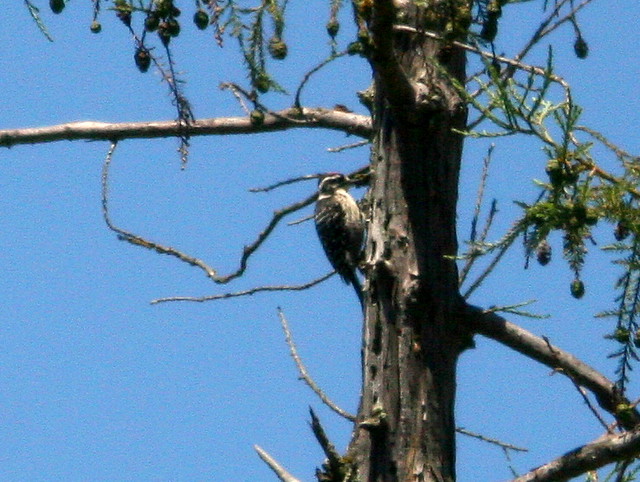
I have not yet gotten photos of these other members of the Picoides genus which are found in the USA:
Red-cockaded Woodpecker (Picoides borealis)
American Three-toed Woodpecker (Picoides dorsalis)
Black-backed Woodpecker (Picoides arcticus)
White-headed Woodpecker (Picoides albolarvatus)
Arizona Woodpecker (Picoides arizonae)
I will be away from Internet and cell phone service for much of these two weeks and prepared several posts in advance, but plan to get back with a "live" report as soon as possible.
we get downies here but i've never seen the hairies. that more-black version is very cool!
ReplyDeleteGreat captures of these interesting woodpeckers.
ReplyDeleteI'm not sure if your comments are moderated. I left you a comment telling you that each and every ONE of these action photos and composition is stupendous.
ReplyDeleteThanks for linking up this week at the Bird D'Pot.
If this is a double posting, I apologize.
Great series of photographs of two species which often confuse novice birders.
ReplyDeleteGreat series of pictures of two species which often confuse novice birders.
ReplyDeleteI feel like I'd know the difference now .... thanks for the beautiful tutorial. Hope you are enjoying a wonderful trip.
ReplyDelete